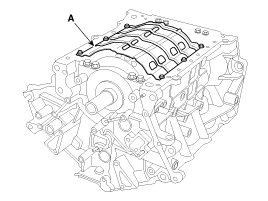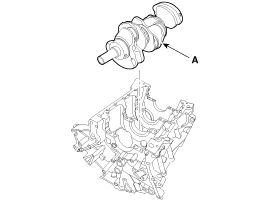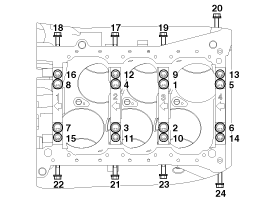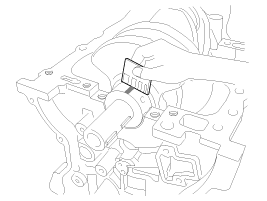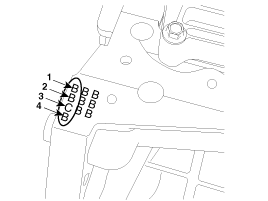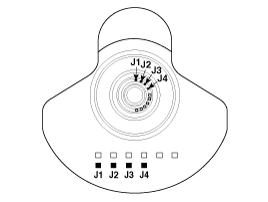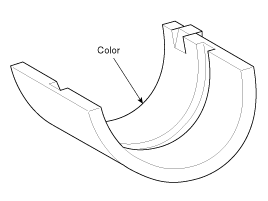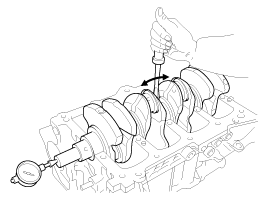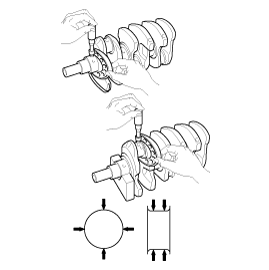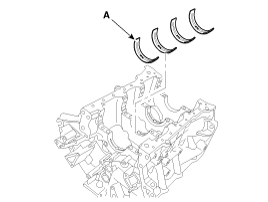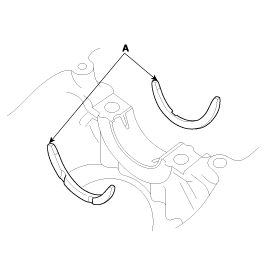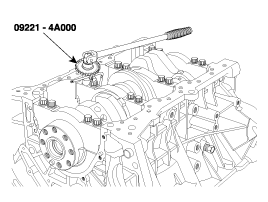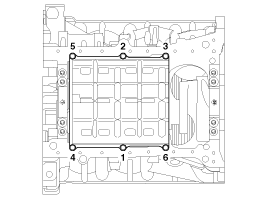 Kia Sedona: Crankshaft Repair procedures
Kia Sedona: Crankshaft Repair procedures
Third generation YP (2014-2026) / Kia Sedona YP Service Manual / Engine Mechanical System / Cylinder Block / Crankshaft Repair procedures
| Disassembly |
|
|
| 1. |
Remove the engine assembly from the vehicle.
(Refer to Engine And Transaxle Assembly - "Engine And Transaxle Assembly") |
| 2. |
Remove the transaxle assembly from the engine assembly.
(Refer to Automatic Transaxle System - "Automatic Transaxle") |
| 3. |
Install the engine assembly to engine stand for disassembly. |
| 4. |
Remove the surge tank.
(Refer to Intake And Exhaust System - "Surge Tank") |
| 5. |
Remove the intake manifold.
(Refer to Intake And Exhaust System - "Intake Manifold") |
| 6. |
Remove the exhaust manifold.
(Refer to Intake And Exhaust System - "Exhaust Manifold") |
| 7. |
Remove the cylinder head assembly.
(Refer to Cylinder Head Assembly - "Cylinder Head") |
| 8. |
Remove the drive plate and adapter plate.
(Refer to Cylinder Block - "Drive Plate") |
| 9. |
Remove the rear oil seal case.
(Refer to Cylinder Block - "Rear Oil Seal") |
| 10. |
Remove the timing chain.
(Refer to Timing System - "Timing Chain") |
| 11. |
Remove the water temperature control assembly.
(Refer to Cooling System - "Water Temperature Control Assembly") |
| 12. |
Remove the lower oil pan and upper oil pan.
(Refer to Lubrication System - "Oil Pan") |
| 13. |
Remove the oil pump.
(Refer to Lubrication System - "Oil Pump") |
| 14. |
Remove the oil filter body.
(Refer to Lubrication System - "Oil filter body") |
| 15. |
Remove the baffle plate (A).
|
| 16. |
Check the connecting rod end play.
(Refer to Cylinder Block - "Piston and Connecting Rod") |
| 17. |
Check the connecting rod cap oil clearance.
(Refer to Cylinder Block - "Piston and Connecting Rod") |
| 18. |
Remove the piston and connecting rod assemblies.
(Refer to Cylinder Block - "Piston and Connecting Rod") |
| 19. |
Remove the crankshaft main bearing cap and check oil clearance. |
| 20. |
Check the crankshaft end play. |
| 21. |
Remove the crankshaft. Lift the crankshaft (A) out of engine, being careful not to damage journals.
|
| Inspection |
| 1. |
Check the crankshaft bearing oil clearance.
| |||||||||||||||||||||||||||||||||||||||||||||||||||||||||||||||||||||||||||||||||||||||||||||||||||
| 2. |
Check crankshaft end play.
Using a dial indicator, measure the thrust clearance while prying the crankshaft back and forth with a screwdriver.
If the end play is greater than maximum, replace the thrust bearings as a set.
|
| 3. |
Inspect main journals and crank pins
Using a micrometer, measure the diameter of each main journal and crank pin.
|
| Reassembly |
|
| 1. |
Install the main bearings.
|
| 2. |
Install the thrust bearings.
Install the 2 thrust bearings (A) under the No.3 journal position of the cylinder block with the oil grooves facing outward.
|
| 3. |
Place the crankshaft (A) on the cylinder block.
|
| 4. |
Place the main bearing caps on cylinder block. |
| 5. |
Install the main bearing cap bolts.
|
| 6. |
Check crankshaft end play. |
| 7. |
Install the piston and connecting rod assemblies.
(Refer to Cylinder Block - "Piston and Connecting Rod") |
| 8. |
Install the baffle plate.
Install and uniformly tighten the baffle plate bolts, in several passes, in the sequence shown.
|
| 9. |
Assemble the other parts in the reverse order of disassembly.
|
 Crankshaft Components and Components Location
Crankshaft Components and Components Location
Components
1. Crankshaft upper bearing2. Thrust bearing3. Crankshaft4. Crankshaft lower bearing5. Main bearing cap
...
 Cylinder Block Repair procedures
Cylinder Block Repair procedures
Disassembly
•
Use fender covers to avoid damaging painted surfaces.
•
To avoid damage, unplug the wiring connectors carefully while holding the co ...
Other Information:
Hood Latch Release Handle Repair procedures
Replacement
1.
Using a screwdriver or remover, remove the hood release handle (A).
•
Use a 6mm hex bit to press the center until the handle easily pulls off ...
Turn on FUSE SWITCH
This warning message illuminates if the fuse switch on the fuse box is OFF.
It means that you should turn the fuse switch on.
For more details, refer to ...
Categories
- Home
- First Generation
- Second Generation
- Third generation
- Kia Sedona YP 2014-2026 Owners Manual
- Kia Sedona YP 2014-2026 Service Manual
Copyright © www.kisedona.com 2016-2026



